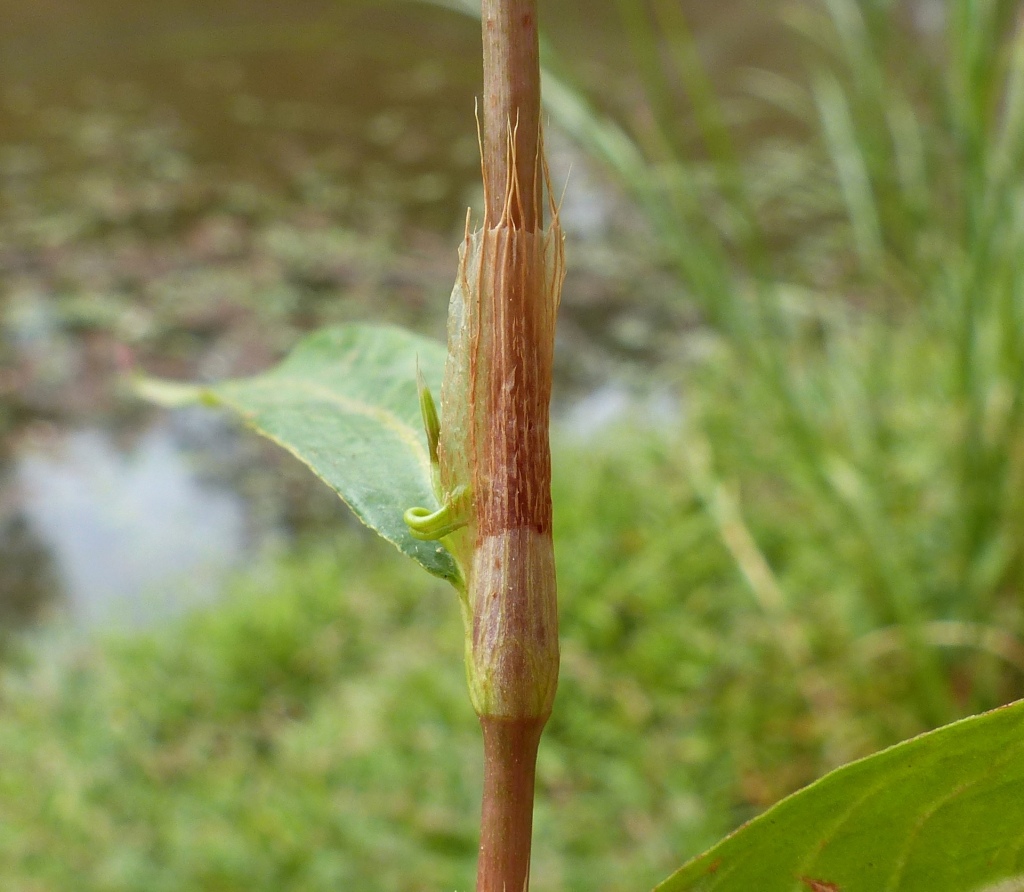Persicaria decipiens
(R.Br.) K.L.Wilson Slender KnotweedDecumbent to erect perennial, to c. 80 cm high, stems glabrous. Ochreas ciliate at apex, glabrous or with a few coarse, appressed hairs on sheath. Leaves lanceolate, 4–15 cm long, 7–25 mm wide, usually with a dark blotch near centre, margins and main veins with short antrorse bristles, lamina glabrous; petiole to c. 1 cm long. Spikes cylindric, 2–6 cm long, 2–5 mm diam., moderately dense, erect; peduncle c. 2–6 cm long; perianth segments 2–3 mm long, deep pink, free for c. two-thirds their length. Nut ovate, biconvex or trigonous, 1.5–2.5 mm long, c. 1.5 mm wide, smooth and shining, dark brown to black. Flowers mainly Dec.–Apr.
MuM, Wim, GleP, Brid, VVP, VRiv, MSB, RobP, MuF, GipP, OtP, WaP, Gold, CVU, GGr, DunT, NIS, EGL, EGU, WPro, HSF, HNF, OtR, Strz, MonT, HFE, VAlp. All States. New Zealand, Malesia, Europe, Africa. Widespread and common along permanent streams and winter-wet depressions, mainly south of the Great Dividing Range, but also along the Murray River and its floodplain.
Walsh, N.G. (1996). Polygonaceae. In: Walsh, N.G.; Entwisle, T.J., Flora of Victoria Vol. 3, Dicotyledons Winteraceae to Myrtaceae, pp. 272–295. Inkata Press, Melbourne.
 Spinning
Spinning



